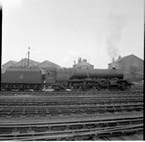el cid again
Posts: 16922
Joined: 10/10/2005
Status: offline

|
You are correct - I don't see any either. Working on Levels 6 and 7 - messing with map edges - probably took them out.
I think they are still on Level 5.
Whatever you don't understand - ask. It is basically alphabetical. I think T stands for Tanks - meaning fuel storage tanks - at unusual places like Oahu and Panama where it exists in vast quantities. The big cases are R for Resources and O for Oil of course. I think map edge supply sources may have S for Supply. Only the very big sources get these symbols - to help players understand what is worth fighting over. RHS is economically oriented. We see the Pacific war as essentially economic at its roots. The causus belli from our point of view was Japanese occupation of Northern Viet Nam - to cut off China from economic supplies. From Japan's point of view it was the Anglo-Dutch-US embargo on oil, iron ore and rubber. And the Japanese strategy in "strike south" was to set up a regional autarky - that is self sufficient economy. They had the iron, copper, coal and aluminum in the North. Also sufficient food. They could capture oil, rubber, and certain valuable minerals, including tin in particular, in the South. Not to mention more of the other stuff - Asia's largest copper mine is on Luzon for example. Can Japan establish an autarky and defend it? This is the question the Pacific War seeks to answer. If yes, it can dominate the are (as PRC proposes to do in this century in its naval literature - see in particular "the first island chain" which runs from Singapore to Kodiak, Alaska - to be controlled by 2030, the second island chain" and "the third island chain" which runs from Port Moresby to Honolulu - to be controlled by 2050). If no, it cannot.
< Message edited by el cid again -- 3/9/2007 12:55:24 PM >
|
 Printable Version
Printable Version









 New Messages
New Messages No New Messages
No New Messages Hot Topic w/ New Messages
Hot Topic w/ New Messages Hot Topic w/o New Messages
Hot Topic w/o New Messages Locked w/ New Messages
Locked w/ New Messages Locked w/o New Messages
Locked w/o New Messages Post New Thread
Post New Thread